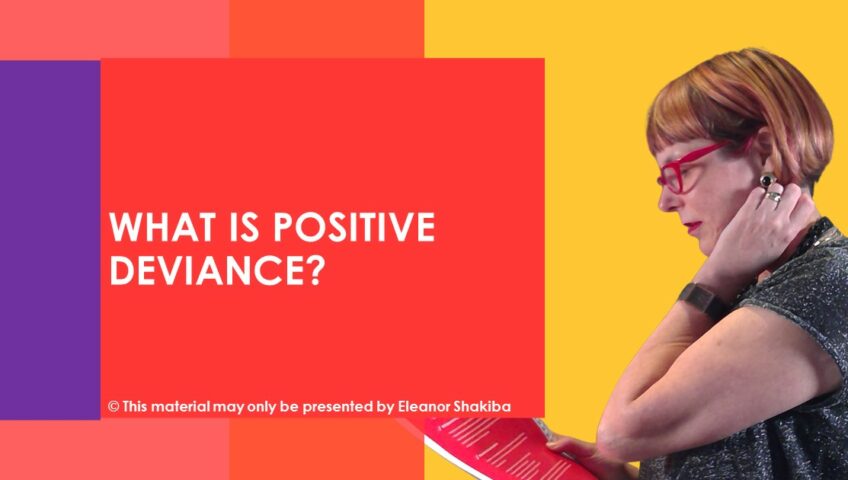Exceptional people solve problems differently to the rest of us. Often, they don’t even realise that problems exist. They simply find ways to get great results. These people are ‘positive deviants’. By paying attention to their behaviours, you’ll discover effective methods for tackling existing problems. Positive deviance theory provides a framework for doing this. In this article, you’ll discover what positive deviance is and how it can be used to build vibrant workplace cultures.
Jerry and Monique Sternin were the first to apply the concept of positive deviance in the real world. In the 1990s, the Sternins visited Vietnam and worked with Save the Children. In villages where malnourishment was prevalent, they found outliers with healthy children. The families with well-nourished children had access to the same resources as others but produced successful outcomes.
By studying the behaviours of the healthy families, the Sternins developed a nutrition program that the entire community could follow to reproduce the same results. The program produces a 74% reduction in malnutrition among children who participated in the program. It was based on applying five key steps, which positive psychology trainers now use in culture-building and team-building initiatives. Here’s a quick overview of those steps.
Define the problem
The first step is to define the problem. In a corporate setting, this requires input from people at all levels. It is also useful to get your customers involved in defining problems.
Evaluate common practices
After defining the problem, start evaluating the practices that people follow that result in unsatisfactory outcomes. Interview the people who are directly involved in the areas that you want to improve. The ones performing the work are best equipped to explain the procedures that they follow.
Evaluate uncommon practices
As you begin evaluating common practices, you are likely to come across uncommon practices employed by a select few individuals. Look for the uncommon practices that provide the best results.
Compare practices
Comparing the common and uncommon practices allows you to determine what does and doesn’t work. Use this information to draft new business procedures that incorporate the positive deviant behaviours that you identified.
Develop an initiative
As with any business strategy, you need to continue monitoring the impact of new business procedures. Choose specific metrics to track to monitor progress and evaluate the success of the initiative.
Every organisation has positive deviants. With the help of positive psychology trainers, you can learn how to spot them within your organisation and use their behaviours to improve the output of others. Contact Eleanor Shakiba to explore resilience training techniques for identifying and harnessing positive deviancy.
About the author: Eleanor Shakiba
Eleanor is a trainer and coach, with a passion for unleashing the power of positive deviance in talented people. She has taught more than 50,000 people how to excel professionally. An expert in the field of Positive Psychology, Eleanor is also qualified in Social Anthropology, Counselling, Coaching, Adult Education and Neuro Linguistic Programming. She specialises in helping HR and L&D practitioners to unleash the power of positive psychology in business. Her major focus in developing three key areas that support positive workplace cultures: positive mindset, proactive communication and purposeful leadership. Eleanor is the author of the Positive Psychology Toolkit for HR and L&D Practitioners. Download your free copy here.
